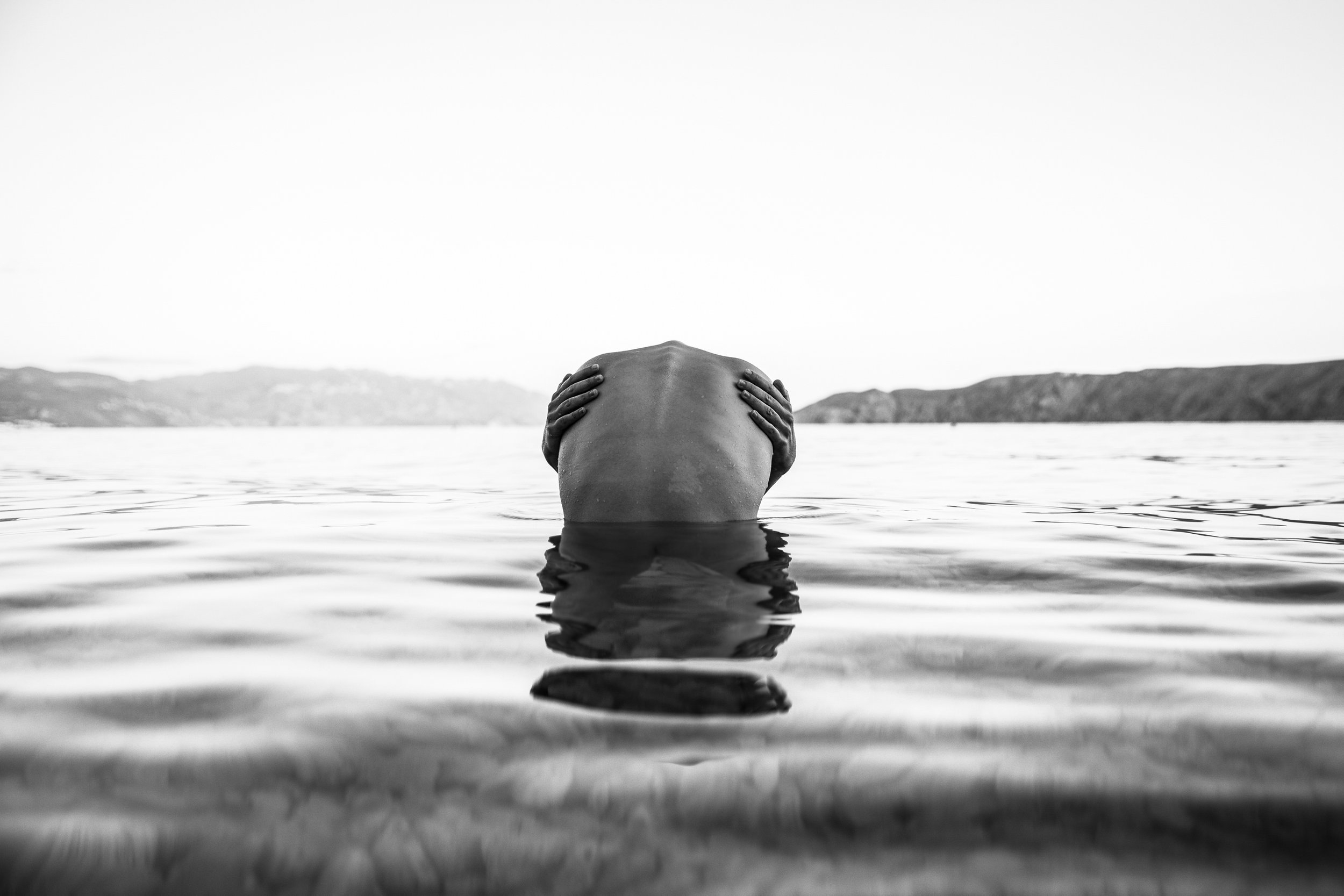According to Greek mythology, the Moirai control the thread of life from our birth to our death. The sisters of fate Clotho, Lachesis and Atropos spin and cut this thread, they hold in their hands the beginning and end, the thread of life. In the same way, we find in certain traditions the custom of palm reading, including the life line which dominates as the most important. Graphic records of a heartbeat appear on an ECG machine in the form of a line. Like a river, they have their path along which they move, a path along which human life flows. Their curves change and differ from person to person. Each life line is unique. Life passes through our bodies almost transcendentally, just as in our bodies we pass through life. Everything flows.
The photographs of the young author Nika Mokos are a result of such reflections on concepts that go beyond the possibility of logical conclusions. Through a set of philosophical and psychological questions about eternity, about essence, about human life as a particle of dust in the totality of existence, Nika Mokos finds catharsis through creative expression in the medium of photography. However, her work does not provide a single answer, but rather offers a series of new questions.
By photographing nudes, the author uses the symbolism and aesthetics of the body to emphasise the ephemerality of our existence and action. We are just a flicker. Like a skilled sculptor, she positions them in wondrous compositions between which linear shapes are created. Lines that flow along bodies and their nakedness lead us back to that which is essential and primaeval. And ultimately to the very flow of life itself. In these different paths, elements are discovered that are more similar than different. Therefore, the author does not reveal her models’ faces so as to completely depersonalise them, thus initiating the process of identifying with them. In doing so, Nika Mokos seeks to make the question of the role of the individual in a cosmic unity universal. This universality is also manifest- ed in the plain of time and space. Namely, since these questions have been present everywhere since the beginning, the author abolishes features of time and space. Using black and white photography and placing the nudes in pristine nature, she annuls the concept of time. This environment was here before us, and it will be here after us. So many people, animals, feelings and memories have passed through these rivers and we are merely a fraction of this forest’s, this mountain’s and this stream’s existence. Nature, therefore, is not a backdrop, nor does it just provide a setting, but rather we are the ones who provide the narrative, as do the bodies that Nika Mokos photographs. In her search for the essential, the author has found a new principle of questioning in the universal and collective which perme- ates us all. In the moment, in which it is truly worthwhile to be fully and consciously present.










